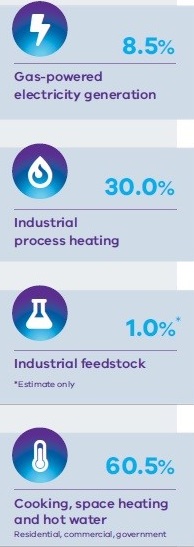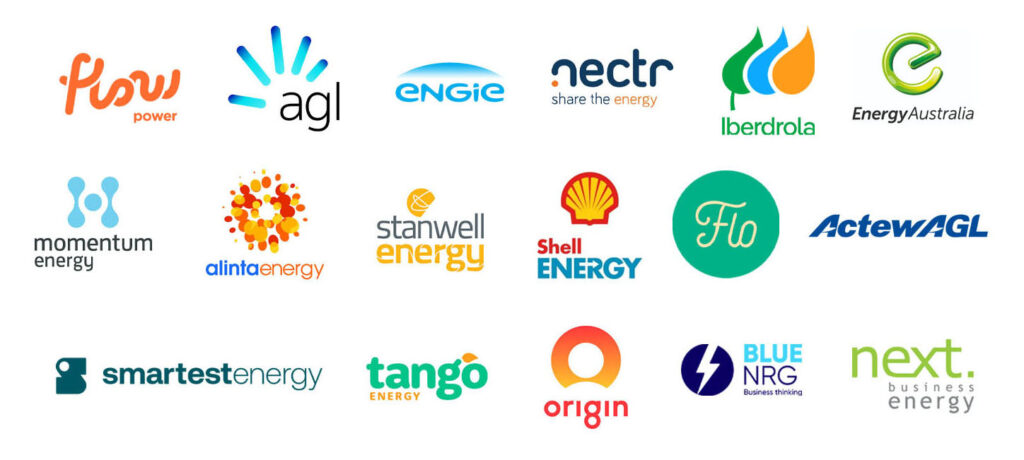Natural gas shortage and prices spikes are looming with modelling suggesting that gas prices will be unaffordable in Victoria by the end of the decade with shortfalls in supply expected from 2022.
An analysis of the market has concluded that by 2030, the price for wholesale gas is projected to rise to around $11 per gigajoule, a 40 percent increase over today’s prices.
The issue is related to supply, with Victoria becoming more reliant on gas from Queensland or overseas as production from the Bass Strait dwindles.
Victorian production levels are projected to plunge 68 percent between 2020 and 2030, contributing to the natural gas shortage.
The cost of piping gas down from Queensland and New South Wales adds further costs for gas users while importing gas from overseas drives prices up even further.
The price squeeze is also being fuelled by increased reliance on gas to fill the gaps that failing coal-fired generators are creating.
Business owners, particularly those that are heavily reliant on LNG for manufacturing are enraged that prices are heading so far north, considering that Australia is the biggest LNG exporter in the world.
Australian Competition & Consumer Commission projects a possible natural gas shortage in 2022
An ACCC report has also projected that Australia’s East Coast could experience a 2PJ shortfall next year.
The situation is compounded by a shortfall of up to 6PJ in southern states if LNG producers export all their surplus gas.
The report forecast is also dependent on the assumption that demand from gas-powered generators sinks to record lows.
Price offers for supply in 2022 trended from $6-11/GJ at the start of 2020 to $6-8 in the second half of 2020.
However, the lower prices are not set to last as users are finding it difficult to obtain supply beyond 2022 and where supply is offered, prices are often at $9-10/GJ.
The difficulty in securing offers beyond 2022 may have been partially caused by uncertainty around the Gas Code of Conduct and the ACCC’s LNG netback price series review.
What does this mean for Australian gas and electricity users
Australian gas prices are steadily increasing due to the prices that are paid for exports and reliance on gas power to fill the gap where coal has failed. This creates further demand for gas, pushing prices up as supply gets squeezed.
Examples include the explosion at Callide C which took over 800MW out of the grid and flooding at the Yallourn coal mine in Victoria, which severely impacted on generation at EnergyAustralia’s power plant.
At the beginning of May, gas represented 6% of Queensland’s energy supply. However, after the Callide C explosion (May 25th) this number varied from 12% up to 24% of the state’s energy mix. The following graph clearly illustrates this point:
Source: AEMO
A similar case happened in Victoria with the mid-June flood at Yallourn, before the event gas was accountable for 2.5% of the state’s supply, yet two weeks later, gas represented 17% of the mix pie.
Source: AEMO
The effect that gas price has on wholesale electricity prices
It is not surprising that in the same period, QLD’s electricity spot prices had a steep rise. In April the average price at 18hs was 197.8 AUD/MWh, in May this value reached 729 AUD/MWh and in June it surpassed 840 AUD/MWh.This analysis can be clearly showcased with the pricing tool:
Source: AEMO
The electricity futures experienced a similar increase after the Callide C event; in just one day 2022 futures rose more than 6%.
Although the Federal Government put a gas security mechanism in place to limit gas exports in times of shortfall back in 2017, it has never been activated, even though NSW and Victoria experienced gas price squeezes over winter.
Gas is also used as “firming generation”, to make up for shortfalls when the sun is not shining and the wind is not blowing, impacting electricity wholesale futures prices further.
The wholesale gas and electricity prices are intrinsically linked and when one increases, the other is more than likely to reciprocate.
This is why both gas and electricity customers need to be in tune with market developments, especially in the context of their existing procurement contracts coming to an end.
If your gas contract comes to an end and you have not made any attempt to find an advantageous offer, your business may end up forking out thousands of dollars more than it should be.
Market timing is key to securing good deals on both gas and electricity in the wholesale futures market.
You can subscribe to our newsletter to keep up to date with all the latest price movements and market developments.
Moving away from gas – the quest to find more sustainable fuel sources
New South Wales and Victoria are leading the charge to find alternatives to gas as fuel. NSW has banned any exploration outside of Santos’ Narrabri project.
Victoria has prohibited the development of unconventional gas and has embarked on a push to shift consumers away from it as a fuel source.
Gas decarbonisation pathways set by the Victorian Government:

Improving energy efficiency
- Housing energy efficiency upgrades
- Appliance upgrades
Electrification
- Substituting gas appliances for electric appliances and equipment
Replacing natural gas with hydrogen
- Or renewable methane produced from hydrogen
Replacing natural gas with biogas
- From the anaerobic digestion of organic material
Emerging technologies
- Concentrated solar thermal, carbon capture and storage, geothermal
Addressing fugitive emissions
- Leaks, venting and flaring of gases in the extraction, production, processing, storage, and transportation of fossil fuels
Until Victoria makes the switch, the construction of Squadron Energy’s new LNG gas import terminal at Port Kembla is taking shape and should be ready to import gas by early 2023. The venture, which is a spin-off from Andrew Forrest’s Green Hydrogen hub, could help avoid a repeat of previous price spikes in winter.
Is your business protected against natural gas shortages and price spikes?
Electricity and natural gas prices in Australia are a risk to your business if not proactively managed.
The good news is that you don’t need to be an energy expert to stay ahead of the market to shield your business from energy price uncertainty.
You can make use of our free-to-use analysis tools to understand more about the National Energy market.
We’re here to help. Chat with us today about how we can help you manage energy price risk and save money for your business. Call us at 1300-852-770 or drop us an email at info@leadingedgeenergy.com.au for an obligation-free consultation on how we can help manage your gas procurement.
We source, analyse, compare and rank commercial, industrial and multisite energy quotes. Obligation Free.
Chat with one of our experienced consultants today and get the insights your business needs to help manage the risks associated with volatile electricity and natural gas markets. Our energy procurement service is obligation-free and provides a time-saving way of securing lower energy rates from our panel of energy retailers.















